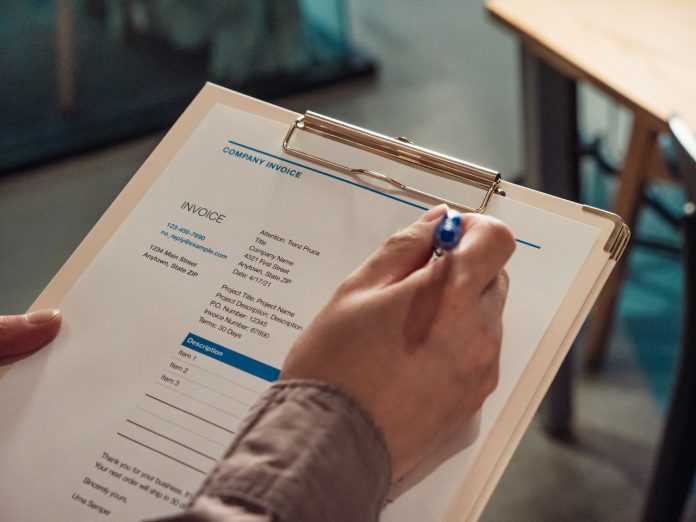Invoicing is part of every business. The objective of invoicing is not just to get paid but to get paid on time. A business invoice is a document that lists both the work accomplished within a stipulated time for a client and the service prices included. Invoices help the client understand the detailed background for what is due, what they are paying for, and when payment is expected.
An ideal invoice contains the date, invoice number, your business details, contact information, terms of payment, and other necessary details.
Basics of an Invoice
Date: The date on the invoice shows the date the invoice was created and sent to the customer. This is found closer to the top of the invoice.
Purchase Order/Invoice Number: An invoice or purchase order number identifies and helps track the record if necessary. Invoice numbers help identify invoices in client records and your bookkeeping system.
Details About the Business: The standard details for a business invoice are a business name, contact person details, logo, and address. This information tells your client about your business and the amount due.
Detail of Client: If you create an invoice for a small business owner/sole proprietor, you may need to add the client’s name and address only. However, for a medium-sized business, you need to add the name of the authorized person dealing with the invoice.
Detail of Transaction: This section discloses the goods or services the client purchased.
Due Date: The due date on the invoice tells the client when the invoiced amount is due for payment. Small business owners request payment terms as n-30. This means the client should make the payment within 30 days.
Breakdown of the Amount Owed: In addition to the regular bill on the invoice, you may provide the breakdown of the total.
How to Create an Invoice Template
If you want to create an invoice, start by inserting a header, create a detailed itemized table, and add a footnote at the bottom if required. It is sometimes intimidating to send your first invoice to your customer without having prior experience.
1. Add a Professional Header
It is necessary to add a professional header to your invoice. The header includes your business name or your full name along with your business logo. The font used to write your name should be easily readable and clear. If you do not have a business logo, no need to worry — just put your business name using a clear and bold text format. The size of the font used to display the business name should be more significant than the text used throughout the invoice.
2. Anchor Your Business Contact Information
Your business contact information includes your mailing address, email address, website, and phone number. All this information displays under your business name.
3. The Client’s Contact Information
The client’s information is a vital part of the invoice. You need to include the contact info, phone number, mailing address, website, and other relevant information from the client’s side.
4. Designate an Invoice Number or Identifier
Under all the contact information, the invoice number or identifier displays in the left corner. An invoice number is an invoice identifier that helps you track your business invoices. Use a sequential order for your invoice identifier so that it is easy to track the record when needed. For example, design the first identifier of a client, John, as J/001/22. The allocation of identifiers makes it easy to track clients and your business information.
5. Date Prepared and Date Due
The date prepared is when you submitted the invoice to the client. It is essential to separately mention the date prepared line as this answers the question of when the invoice issued. Usually, clients take a long time to reimburse the payment.
You can also mention the generic payment terms/due dates, i.e. due on receipt. n-30, n-45 etc. days.
6. Payment Methods
You can add a payment method to your invoice as well. This means, mentioning whether you would like cash payment, credit card, or a bank account transfer, etc.
7. Provide a Complete Breakdown of Services
List the services you provided so that clients easily identify what they are liable to pay for.
8. Add an Amount Due and a Thank-you Note
Finally, after providing the complete breakdown, tally all those items and add the total amount. It is professional to add a thank you note in the invoice to maintain a good relationship with clients.
References
https://www.legalzoom.com/articles/creating-an-invoice-template-for-your-business
https://www.businessnewsdaily.com/15964-how-to-create-an-invoice.html
https://www.thebalance.com/how-to-create-an-invoice-for-your-business-5196704
https://thewritelife.com/how-to-write-an-invoice-as-a-freelance-writer/
https://www.freshbooks.com/hub/invoicing/making-an-invoice
Find a Home-Based Business to Start-Up >>> Hundreds of Business Listings.

















































